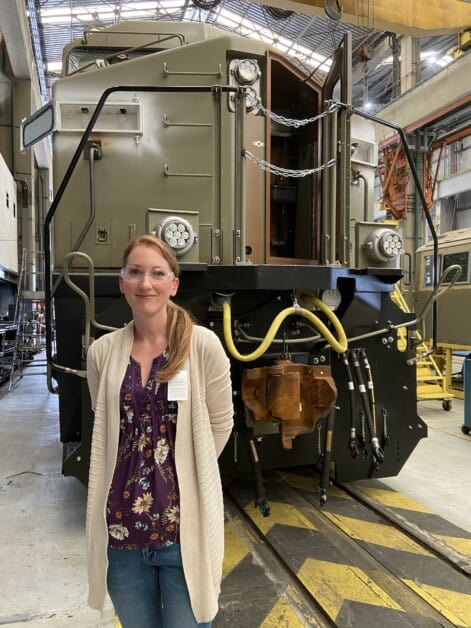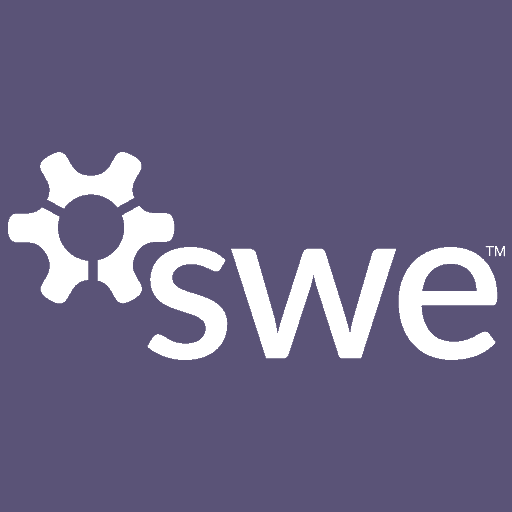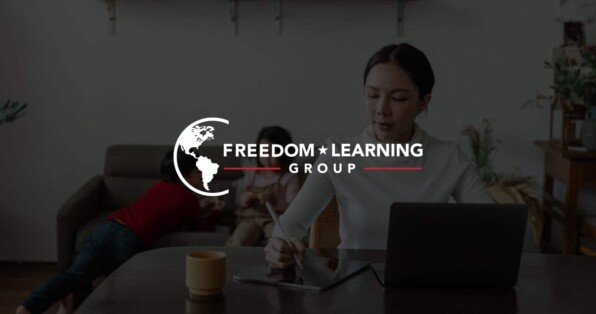Welcome, Kristin! Could you introduce yourself and share what your professional background looked like before you took a career break?
I am the director of project management for advanced technology at Wabtec, working remotely from Houston. In my role, I lead our new technology introduction of a hydrogen fuel cell freight locomotive. It is very exciting to be on the forefront of designing this technology.
Prior to Wabtec, I spent 12 years at General Electric in various business units and leadership capacities, such as project engineer, program manager, engineering manager and director of technical leadership programs. I left GE in March 2018 and took about nine months off. In January 2019, I took a role as global engineering director for Reservoir Group, where I spent a short four months before the company faced challenges and eliminated my role.
I have a mechanical engineering degree from Louisiana Tech University. Outside of work, my personal passions include my horses, my Corvette, my family, nutrition and strength training.
How long was your career break, and what did you focus on during that time?
My career break was about four years, split between the first nine-month stint and the second break of a little over three years. During the first nine months, I had a two-year-old at home, and we had recently moved to an acreage property where I was able to house my horses on site. I focused on being a mom, managing my new household, enjoying my horses and searching for the right next step in my career — namely opportunities to do some consulting.
In March 2020, the COVID-19 pandemic hit Texas, so my focus shifted back toward my household. In 2021, I experimented with a few businesses focused on health and nutrition. At the beginning of 2022, I set the goal to get back into the corporate workforce. I put together a two-phase strategy to find the right role.
For the first four months, I submitted applications using tools such as Indeed. In April, I decided to look for a “fun” job out of the house that would give me some social stimulation, so I landed a job at the local retail saddle shop.
I also began phase two of the job hunt. I got serious about networking, reaching out to my connections on LinkedIn one by one and letting them know I was looking to reenter the workforce and would appreciate any help they could lend me. That was the turning point.
I worked four hours a day at the saddle shop, so I devoted the remaining time to phone calls, lunch/coffee meetups and interviews. My network opened several opportunities for me, and by August, I was in negotiations with a few companies. I accepted Wabtec’s offer to start in September 2022.
What made you want to return to the workforce?
I had accomplished my goals for the career break. I was the healthiest I’d ever been, my batteries were recharged, my son was in kindergarten, and I really wanted to once again use my skills to produce something.
What was most important to you in a potential employer when you began looking to return to the workforce?
The characteristics I targeted in an employer were profitability, a leader in innovation, great culture, employee satisfaction and flexibility so that I could integrate my work and my life holistically.
What was it like interviewing again? What about your first day back working?
Most of the early interviews were more like conversations with former colleagues and exploratory conversations for both the company and myself to determine if there was a fit. The formal interviews were the easy part since we’d mostly laid the groundwork for those roles being a fit.
Since I work remotely, my first day back was a 10-foot walk from the kitchen to my office. My supervisor made sure to schedule a connect call with me that morning, and he also ensured that I had all the tools I needed to be up and running on day one. I was very impressed with our IT department in having my online account automatically turn on Day 1, and my laptop arrived a week or so before that. There was no lag in my onboarding.
How do you find work-life balance now that you’re back in the workforce? What support systems do you have in place to help with that?

Coming back this time around, I have more of an integrated approach to work and life. The remote work culture that COVID forced us into also forced many new tools and mindsets that contrast with the workforce that I left.
Previously, I couldn’t even access my OneNote notebooks or PowerPoints on my work cell. Now, the content syncs seamlessly across my mobile tools. A week into working, I got so excited when I realized I could open one of my PowerPoints on my phone and not only view it, but also make modifications and save it to continue later on my laptop.
Before, I would stress and burn myself out trying to compartmentalize my work life from my personal life, and it haphazardly worked until I became a mom. Then, it became a neverending battle at the expense of myself.
In this new age, I’m happy to sign on at 6:30 in the morning for a couple calls or emails, sign off an hour later to get my son ready and dropped off at school, then sign back on after that or catch a call in the parking lot of the school. I can squeeze in a gym session over lunch or a doctor’s appointment in the afternoon, a school holiday party here and there, and pick the work back up in the evening.
I’m perfectly fine sitting with my work computer in my lap on a Sunday afternoon when I had the flexibility to give some of my time in the previous week to my own or my son’s well-being. It makes for joy in both the work and the personal life, which is very fulfilling.
What did your employer, manager and colleagues do that worked well for you in returning to the workforce? What role did they play?
For me, it was all about my supervisor’s communication and connection style. Due to the global nature of the work our team did, we are all in various locations around the world including Brazil, India, the U.S., Italy and France. Communication, regular touchpoints, the use of video, and get-to-knows were all key to getting re-immersed in the culture.
Early on, I made visits to two of our largest manufacturing and engineering sites, and within the next year, I visited our facility in Brazil twice. I still have a weekly 1:1 with my manager where we connect outside of meetings to ensure we stay aligned on the direction we need to go and how we can continue to improve. My supervisor is very open to regular feedback, and so am I. That keeps the working relationship healthy and builds trust.
What could have gone more smoothly in your transition back into the workforce?
The real thing I miss is the in-person connection via things like team lunches, happy hours, affinity network events, etc. The closest thing to that I’ve implemented is a regular connection with a couple of colleagues that’s a bit like a virtual lunch, which provides a way to drive camaraderie.
Did you have any imposter syndrome when you returned to the workforce? And if so, how did you overcome that?
Yes, being out of the workforce for as long as I was made me feel like my skills wouldn’t be as relevant as they were when I left. I assumed that I would need to take a step back in my career and start a couple levels below where I left, and I did not expect that I would be considered for management roles or higher.
The two-phase networking process helped me overcome the lack of confidence that I had built over the years. As I had these conversations, more of my experience and expertise started coming back to me, and I started proving my value to myself.
I was pleasantly surprised when I was offered roles at the director level, and I even had some leverage to negotiate the salary. It took me a few months to really get back up to speed, and the longer I was in the old familiar environment, the more I felt at home again.
How do you leverage SWE in your career now?
SWE has always been close to my heart. It’s through SWE that I was first recruited into GE as an intern!
My active involvement in SWE has ebbed and flowed, but I enjoyed using it as a forum to give back to a director of mine who had a lasting impact on me by nominating her for a SWE award, which she accepted on stage at the Philadelphia conference several years ago.
I was honored to be invited by my company to attend the WE23 conference in Los Angeles, which I had to join remotely. Again, this goes back to my company’s culture of supporting parents and work-life integration. Because of some very exciting work I’m doing with Wabtec in my new role, I hope to be able to speak in some capacity at the annual SWE conference either this year or next.
What would you tell somebody who is considering returning to work, but hasn’t yet made the leap?
I think that instead of looking at it as a break, we should consider it a sabbatical. Sabbaticals have a purpose and a goal, and most career breaks do as well.
Have confidence in who you were when you stepped away from the workforce. Look at it as an enhancement to who you are as a whole person and how it’s benefited you as a leader.
Aspire to step back into the workforce right where you left off by self-advocating the value you brought previously, along with the even greater value you can bring with what you achieved and learned during the sabbatical.
Are you looking to reenter the workforce? SWE has a variety of resources to help you on your journey, including:
- Advance Learning Center ― Explore our specially-curated content to help prepare you for reentering the workforce. Upon completion of the courses, you’ll earn the Return to Work badge, which you can proudly display on your social media and email.
- SWE Mentor Network ― Tap into this exclusive members-only community for mentoring services from members from across the globe in your area of engineering.
- Return-to-Work Opportunities
- Career Center ―SWE’s premier online recruitment resource for leading companies in the engineering and technology field committed to advancing women in STEM, with 10,000+ job postings from more than 650 employers, including the world’s largest engineering and technology firms.
- Reentry Programs ― The STEM Reentry Task Force features a list of nearly 30 companies offering reentry programs.
Plus, be sure to sign up for SWE’s Reentry Quarterly Newsletter.
Author
-

SWE Blog provides up-to-date information and news about the Society and how our members are making a difference every day. You’ll find stories about SWE members, engineering, technology, and other STEM-related topics.






